Network graphs serve as powerful tools for visualizing connections and relationships within complex datasets. By emphasizing the depth of these relationships and incorporating interactive elements, users can explore data more effectively and uncover insights that traditional representations may overlook. Selecting the appropriate visualization method is crucial for enhancing understanding and facilitating meaningful data interaction.
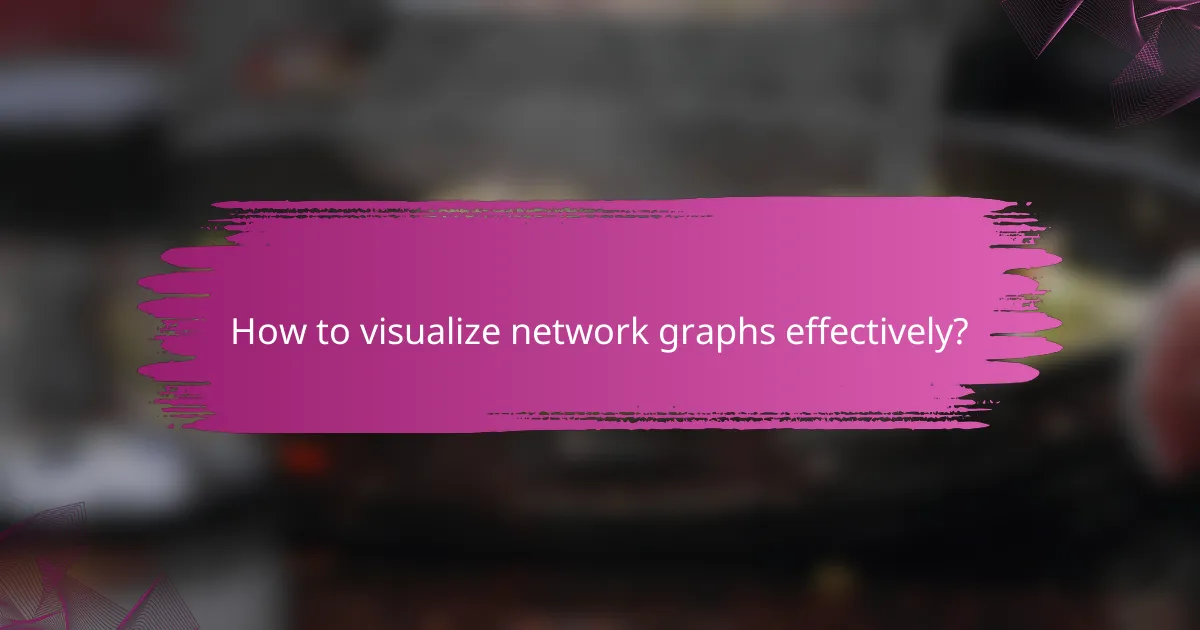
How to visualize network graphs effectively?
Effective visualization of network graphs involves selecting the right tools and techniques to clearly represent connections and relationships. Consider the depth of relationships and the interactivity needed for data exploration when choosing a visualization method.
Using Gephi for visualization
Gephi is a powerful open-source tool designed for visualizing large network graphs. It allows users to manipulate the layout and appearance of graphs dynamically, making it ideal for exploring complex relationships.
When using Gephi, focus on the layout algorithms available, such as ForceAtlas2, which can help reveal the structure of the network. Remember to adjust the node size and color based on attributes to enhance clarity.
Leveraging Cytoscape for biological data
Cytoscape is particularly suited for visualizing biological networks, such as protein-protein interactions. It offers a variety of plugins that enhance functionality, allowing for detailed analysis of biological data.
To effectively use Cytoscape, ensure that your data is formatted correctly, typically in tabular form. Utilize its built-in analysis tools to identify key nodes and pathways, which can provide insights into biological processes.
Employing D3.js for interactive graphs
D3.js is a JavaScript library that enables the creation of dynamic, interactive network graphs on the web. It allows for extensive customization and can handle real-time data updates, making it suitable for applications requiring user interaction.
When implementing D3.js, focus on the scalability of your graphs. Use hierarchical data structures to manage large datasets effectively and consider performance optimization techniques to ensure smooth interactions.
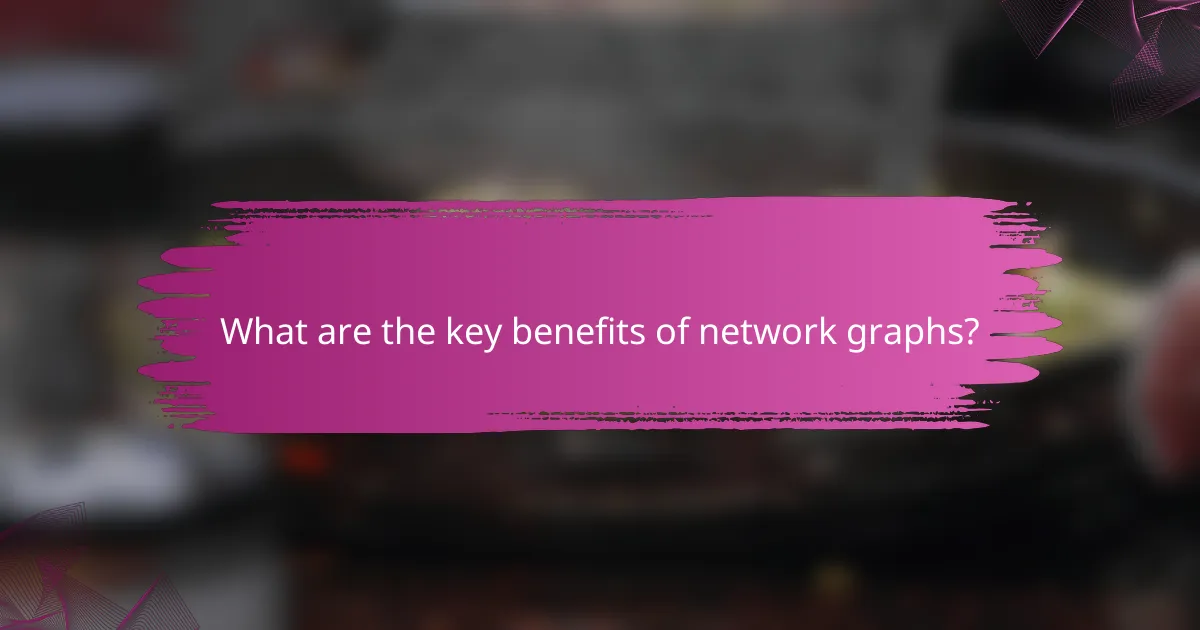
What are the key benefits of network graphs?
Network graphs offer significant advantages in visualizing connections and relationships within data. They enhance understanding of complex interactions, allowing users to identify patterns and insights that may not be apparent in traditional data representations.
Enhanced relationship insights
Network graphs provide a clear visualization of relationships, making it easier to see how entities are connected. This can reveal the strength and nature of connections, such as whether they are direct or indirect, which is crucial for analyzing social networks or organizational structures.
For example, in a social media context, a network graph can show how users interact with each other, highlighting influential individuals or communities. This insight can guide marketing strategies or community engagement efforts.
Improved data interaction
With network graphs, users can interact with data in a dynamic way, allowing for exploration of different relationships and pathways. This interactivity can include zooming in on specific nodes or filtering connections based on certain criteria.
Such features enable users to drill down into data sets, uncovering hidden relationships or trends. For instance, a researcher can focus on specific demographics within a larger dataset, enhancing the depth of their analysis.
Facilitated decision-making
Network graphs support informed decision-making by presenting complex data in an accessible format. By visualizing connections and relationships, stakeholders can quickly assess situations and make strategic choices based on comprehensive insights.
For example, businesses can use network graphs to analyze customer relationships and preferences, leading to better-targeted marketing campaigns. This approach can significantly improve resource allocation and operational efficiency.

Which tools are best for creating network graphs?
Several tools excel at creating network graphs, each with unique features tailored for different needs. Popular options include Neo4j, Microsoft Power BI, and Tableau, which cater to various aspects of data visualization, analytics, and database management.
Neo4j for graph databases
Neo4j is a leading graph database management system designed specifically for handling complex relationships in data. It allows users to model, store, and query data as interconnected nodes and relationships, making it ideal for applications like social networks or fraud detection.
When using Neo4j, consider its Cypher query language, which simplifies data retrieval and manipulation. A common pitfall is underestimating the need for proper indexing, which can significantly enhance query performance.
Microsoft Power BI for business analytics
Microsoft Power BI is a powerful business analytics tool that enables users to create interactive visualizations, including network graphs. It integrates seamlessly with various data sources, allowing for real-time data analysis and reporting.
To effectively use Power BI for network graphs, leverage its built-in visualizations and customize them to reflect specific relationships. Be cautious of overloading your visualizations with too much data, which can obscure insights and hinder user engagement.
Tableau for data visualization
Tableau is a versatile data visualization tool that supports the creation of network graphs through its drag-and-drop interface. It excels in transforming complex datasets into clear, interactive visual representations, making it suitable for both technical and non-technical users.
When creating network graphs in Tableau, utilize its extensive library of visualization options and filters to enhance clarity. Avoid cluttering your graphs with excessive details; instead, focus on key relationships to facilitate better understanding and decision-making.
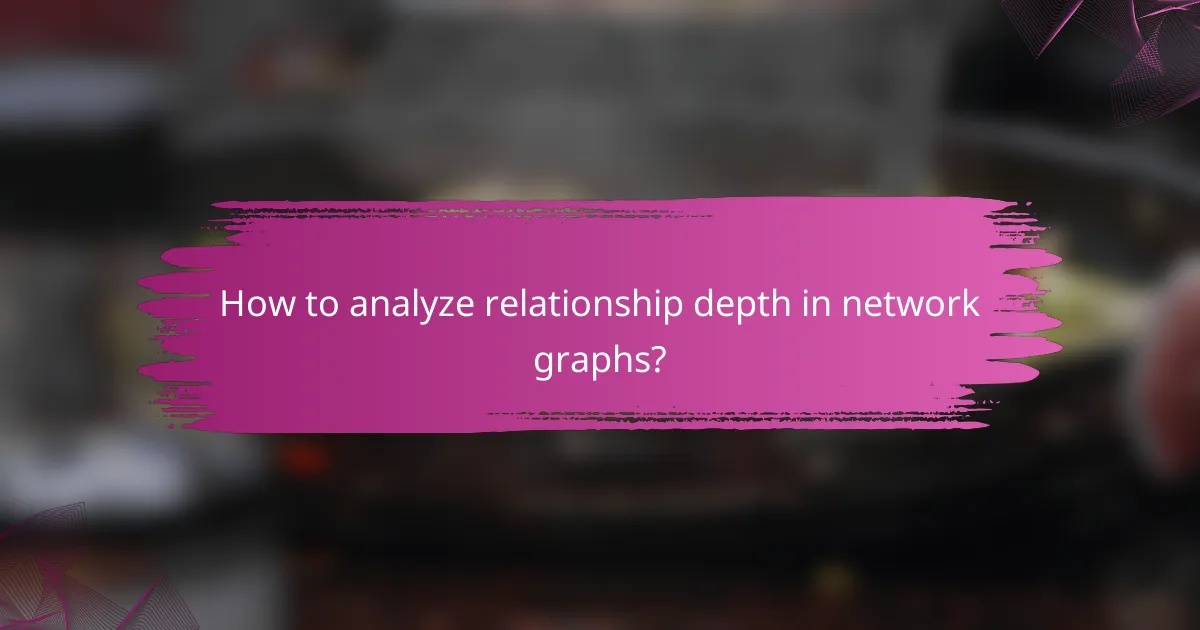
How to analyze relationship depth in network graphs?
Analyzing relationship depth in network graphs involves assessing the significance and strength of connections between nodes. This can reveal insights into the structure and dynamics of the network, helping to identify key players and clusters within the data.
Using centrality measures
Centrality measures quantify the importance of a node within a network. Common metrics include degree centrality, which counts direct connections; closeness centrality, which assesses how quickly a node can access other nodes; and betweenness centrality, which identifies nodes that serve as bridges between others. Each measure provides a different perspective on relationship depth.
For practical analysis, consider using degree centrality to identify influential nodes in social networks, while betweenness centrality can highlight nodes that control information flow. Tools like Gephi or NetworkX can facilitate these calculations, allowing you to visualize and interpret the results effectively.
Applying clustering algorithms
Clustering algorithms group nodes based on their relationships, revealing deeper connections within the network. Techniques such as k-means, hierarchical clustering, and community detection algorithms like Louvain can uncover subgroups that share strong ties. This helps in understanding the overall structure and the depth of relationships.
When applying clustering, ensure you select the right algorithm based on your data’s characteristics. For instance, hierarchical clustering is useful for smaller datasets, while community detection is better for larger networks. Always validate the clusters by checking their stability and relevance to your analysis goals.
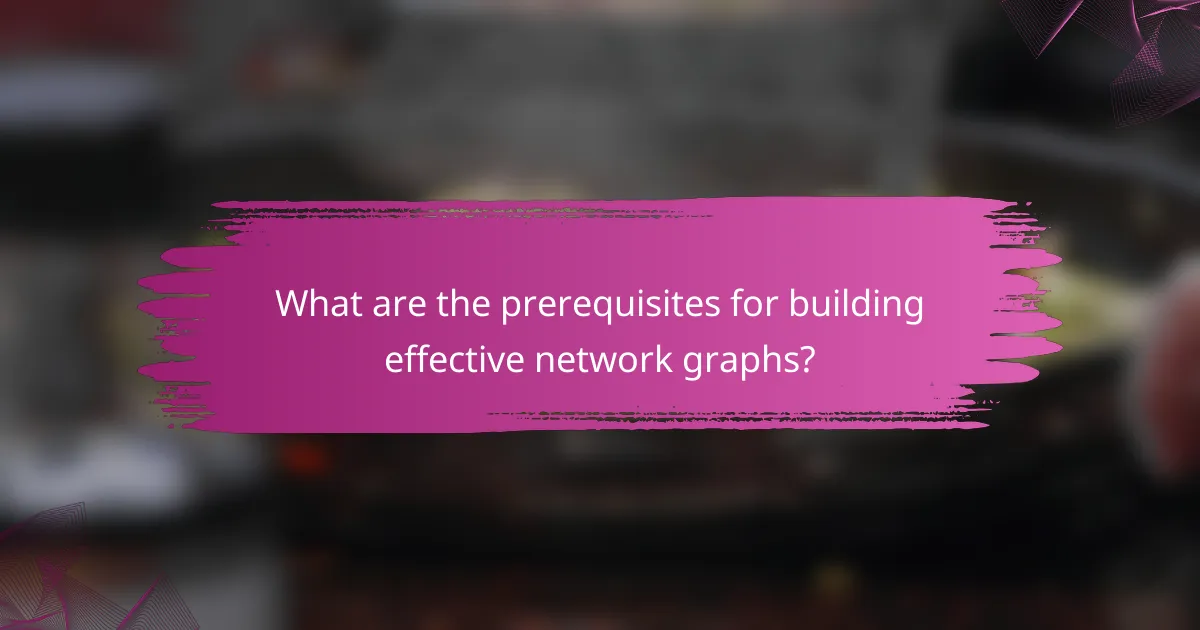
What are the prerequisites for building effective network graphs?
To build effective network graphs, a solid understanding of graph theory and familiarity with relevant data sources are essential. These prerequisites ensure that the visualizations accurately represent connections and relationships within the data.
Understanding graph theory basics
Graph theory provides the foundational concepts needed to create network graphs, including nodes, edges, and their properties. Familiarity with terms like directed vs. undirected graphs, weighted edges, and connectivity will help in designing meaningful visualizations.
It’s important to grasp how different structures can affect the interpretation of relationships. For example, a star topology may highlight a central node, while a mesh topology can illustrate redundancy and resilience in connections.
Familiarity with data sources
Knowing where to source your data is critical for building network graphs. Common sources include databases, APIs, and spreadsheets, which can provide the necessary information about entities and their relationships.
When selecting data, ensure it is clean and well-structured to avoid complications during visualization. Consider using tools that can help in data transformation and cleaning, as messy data can lead to misleading graphs.
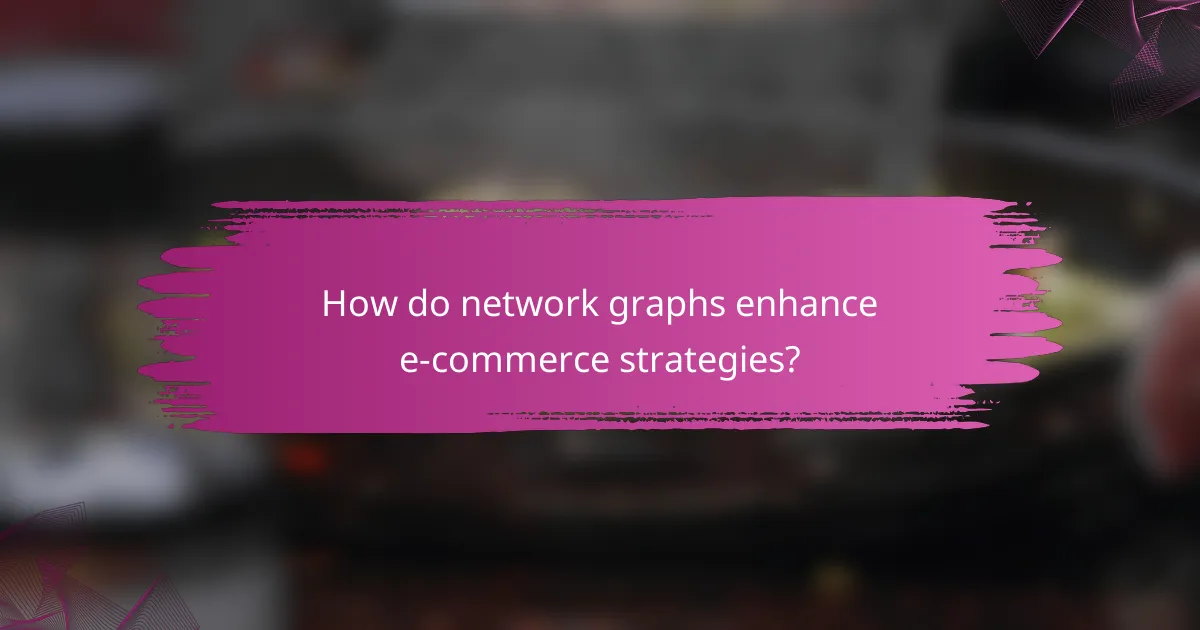
How do network graphs enhance e-commerce strategies?
Network graphs improve e-commerce strategies by visualizing connections between products, customers, and other entities. This visualization helps businesses understand relationships and interactions, leading to better decision-making and targeted marketing efforts.
Connection visualization
Connection visualization in network graphs allows e-commerce businesses to see how products are related to each other and how customers interact with these products. By mapping out these connections, companies can identify popular items, cross-selling opportunities, and potential gaps in their offerings.
For example, if a network graph shows that customers who purchase a specific smartphone often buy a particular case, businesses can create bundled offers or targeted advertisements to encourage these purchases. This approach can enhance customer satisfaction and increase sales.
Relationship depth
Relationship depth refers to the complexity and strength of connections within the network graph. E-commerce platforms can analyze not just direct relationships but also indirect ones, revealing deeper insights into customer behavior and preferences.
Understanding relationship depth can help businesses tailor their marketing strategies. For instance, if a network graph indicates that a subset of customers frequently interacts with a specific brand, targeted campaigns can be developed to engage this audience more effectively.
Data interaction
Data interaction in network graphs enables real-time analysis and manipulation of data, allowing e-commerce businesses to adapt quickly to changing market conditions. Users can filter and drill down into specific connections to uncover actionable insights.
For instance, an e-commerce site might use interactive network graphs to track customer journeys, identifying where users drop off in the purchasing process. This information can guide improvements in website design or customer support, ultimately enhancing conversion rates.
